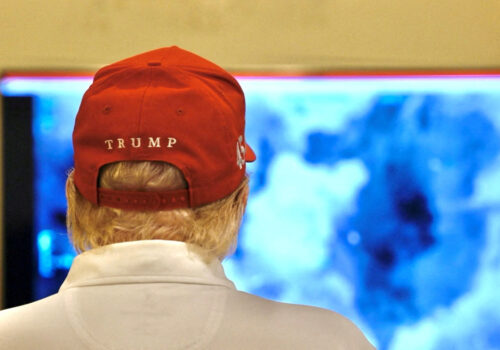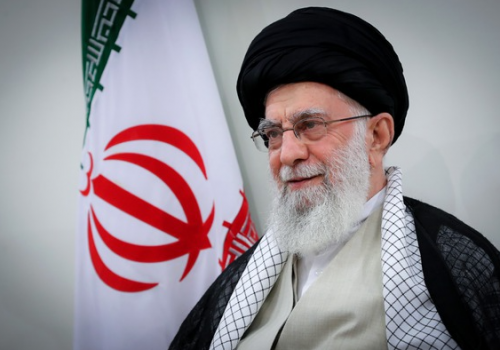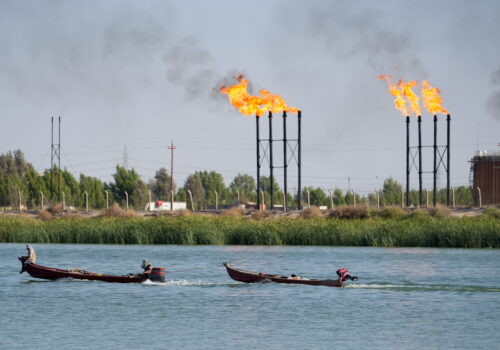Iran is at an unprecedented crossroads over its nuclear program
The Middle East is experiencing a rare realignment that puts Iran in an unprecedently vulnerable position. The convergence of US military and advanced weapons systems deployments, public sentiment in the United States and Israel, the weakening of Iran’s regional proxies, the dismantling of its S-300 air defense network, and US President Donald Trump’s explicit time-bound ultimatum on a nuclear deal. With these cards in the deck, Iranian defiance in US negotiations could prove to be a catastrophic gamble for the regime in Tehran.
Trump’s demand for a negotiated settlement comes with a fast-approaching deadline reportedly set for mid-May 2025, with a secondary time limit set for mid-August, tied to the expiration of the 2015 nuclear deal’s provisions.
This ticking clock is no bluff. It aligns with a political and military strategy that maximizes US leverage. The Trump administration has synchronized its “maximum pressure” campaign—reimposing sanctions and targeting Iran’s oil exports—with a military posture that leaves no room for misinterpretation. Unlike his first term, where maximum pressure failed to bring Iran to the table, the current context is different: Iran’s economy is reeling, its proxies are broken, and its defenses are compromised. The stars have aligned in a way they haven’t before, giving Trump and Israeli Prime Minister Benjamin Netanyahu both the will and the means to act decisively if Iran refuses.
The US military presence in the Middle East has escalated significantly due to the campaign against the Houthis in Yemen and the looming showdown over Iran’s nuclear program. Washington’s ramped-up deployments suggest both aims of deterring and preparing for potential strikes. Two carrier strike groups, including the USS Carl Vinson, are now positioned in the region, alongside additional fighter squadrons and B-2 stealth bombers stationed at Diego Garcia in the Indian Ocean, additional fighter aircraft, and missile defense systems deployed in strategic locations for the United States across the Middle East.
These assets, capable of delivering precision strikes deep into Iranian territory, are not merely symbolic. The B-2s are particularly designed to penetrate advanced air defenses and target hardened facilities, precisely the kind housing Iran’s nuclear program. The missile defense systems deployed by the United States are meant to stave off retaliatory strikes from Iran against targets in the region. This isn’t just the Trump administration posturing— it’s the build up of a very viable military option.
SIGN UP FOR THIS WEEK IN THE MIDEAST NEWSLETTER
Compounding Iran’s predicament is the decimation of its proxy network, a cornerstone of its regional influence and deterrence strategy. Hamas, once a potent thorn in Israel’s side, has been reduced to a shadow of its former self following Israel’s relentless military campaign in Gaza after the Palestinian militant group’s October 7, 2023 attacks. Hezbollah, Iran’s most formidable ally in Lebanon, has similarly been battered, its missile stockpiles depleted and leadership crippled by Israeli operations. The December 2024 fall of Bashar al-Assad in Syria has further severed Iran’s land bridge to Hezbollah, leaving its Axis of Resistance in tatters.
These losses strip Iran of its ability to wage asymmetric warfare against US or Israeli forces, a tactic it has long relied upon to offset its conventional military weaknesses. Without these proxies, Iran’s strategic depth is shallow, exposing it to direct retaliation with little buffer.
The destruction of Iran’s S-300 air defense systems by Israel in October 2024 has left the country even more defenseless. The S-300, a Russian-supplied system, was Iran’s most advanced shield against aerial attacks, intended to protect key nuclear and military sites. Its obliteration—demonstrated by Israel’s ability to strike with impunity—means US or Israeli bombers could face minimal resistance penetrating Iranian airspace. Iran’s remaining defenses, largely outdated or domestically produced, are no match for stealth technology or the overwhelming firepower now arrayed against it. This vulnerability transforms Trump’s threats from rhetoric into a credible promise of devastation, as Iran’s nuclear facilities lie naked before US and allied air forces.
For Iran to ignore this demand would be to bet on its ability to withstand a military onslaught it is ill-equipped to repel. Tehran’s leadership may cling to ideological defiance or hope for diplomatic stalling, but the reality is stark: its nuclear program, enriched to near-weapons-grade levels, is a red line for both the United States and Israel, and the latter has already shown its willingness to strike. With Trump signaling openness to talks but readiness for war—“negotiate or face bombing the likes of which they’ve never seen”— Iran risks not just the loss of its nuclear ambitions but the decimation of its military and economic infrastructure. The regime’s survival hinges on recognizing this unprecedented alignment of forces and choosing pragmatism over pride. To do otherwise is to invite ruin.
To underscore the seriousness of the issue and cooperation with Israel on the matter, Trump stated, just days before the United States is set to begin negotiations with Tehran, that Israel would be the “leader” of a potential military strike against Iran if it doesn’t give up its nuclear weapons program. He also said that Iran would be in “great danger” if the talks were “unsuccessful.” When asked if that meant military action, Trump confirmed and said “if necessary, absolutely . . . If it requires military, we’re going to have military.”
The Israeli government supports Trump’s attempts to negotiate a settlement. Netanyahu supports a disarmament model in which the United States would oversee the destruction of Iran’s nuclear program, similar to how it did in Libya in 2003. But Netanyahu has still expressed skepticism about a potential deal, saying “I think that would be a good thing.”
“But whatever happens, we have to make sure that Iran does not have nuclear weapons,” he added. The comment appears to leave room for Israel to maneuver in the event a US deal is unfavorable.
If the United States and Iran reach a deal that fails to satisfy security needs from the Israeli government’s perspective, then Israel could still act alone. As such, the best outcome is a deal that satisfies security concerns for all parties, though it will be difficult domestically for the regime in Tehran to capitulate to Washington’s position of total and verifiable dismantlement of Iran’s nuclear program. Failure to do so could have significant consequences with global implications.
Alex Plitsas is a nonresident senior fellow with the Middle East Programs’ Scowcroft Middle East Security Initiative and leads the Initiative’s Counterterrorism Project. He is currently a principal and industry director at Providence Consulting Group for aerospace, defense, and high-tech electronics.
Further reading
Thu, Apr 10, 2025
No, Iran didn’t abandon the Houthis. It just wants Trump to think so.
MENASource By
Instead of interpreting Iran's narrative shift as a break from the Houthis, we might see it as tactical storytelling. And the story's working.
Tue, Mar 25, 2025
After proxies and nuclear program threats, Iran may turn to terror abroad
MENASource By Alex Plitsas
Iran could turn to transnational terrorism as threats mount of Israeli strike on Tehran’s nuclear facilities, after a weakening of its numerous proxies since the Gaza war.
Thu, Apr 3, 2025
Washington halted the Iraq-Iran electricity waiver. Here is how it’s perceived by Washington and Baghdad.
MENASource By Ahmed Tabaqchali, C. Anthony Pfaff
By making Iranian energy more costly, the United States hopes to incentivize Iraq to diversify its energy sources and reduce its dependency on Iran.
Image: Iranian protesters shout anti-Israeli and anti-U.S. slogans while participating in an anti-Israeli protest at Palestine Square in downtown Tehran, Iran, on April 9, 2025. Iranian protesters gather at Palestine Square to show their anger and protest against the new Israeli airstrikes on the city of Gaza. (Photo by Morteza Nikoubazl/NurPhoto)NO USE FRANCE



